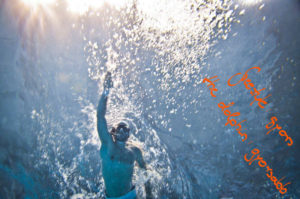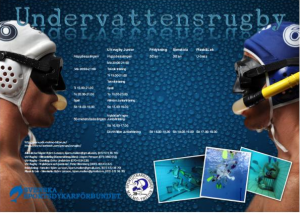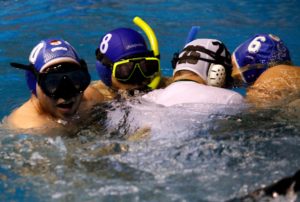Let’s assume you swim OK but never used fins in your life. Fear not – the learning curve of UWR starts steep, but once you’re past this part a whole new world opens up.
The first thing you need to learn before anything else is submerging comfortably: equalizing your ears and clearing your snorkel.
Equalizing is the same process as what you do when taking off with a plane or descending fast from a mountain. As you dive underneath the surface, the pressure on your ear increases. You counter that with blowing air in your ears ear to increase internal pressure. Just like whistling, it is a lot more difficult to describe than to do. Take your time and find a method which works for you the most.
Clearing your snorkel means blowing the water out of your snorkel as you surface. It becomes a motoric function after a couple of weeks, until then expect to swallow an extra dose of Chlorine.
Once you are fine with diving, it is time to focus on swimming. The most common beginner fins are scuba fins like Stratos. They tend to be long and rigid because they are designed to propel divers who are slow and heavy because of their gear. So most people start with scissor kicks.
I recommend that you skip that part altogether and get yourself finswimming fins or short composite blades so you can master the dolphin kick.

The dolphin kick is a far more effective and ultimately faster alternative to the scissor kick. So effective, that despite the name “freestyle”, FINA forbids/limits but one style even in freestyle: the dolphin kick.
If you want to improve your technique, you should understand the basic principles of finswimming. It’s all about creating a perfect sine wave with the least resistance possible. The velocity of the swimmer is defined by his/her wavelength and frequency. So the taller and skinnier you are, the more advantage you have. Notice that increasing the amplitude does not increase the velocity. In real life it means that smooth glide will get you further than huge kicks.
I’ve found the most effective way to improve my finswimming skills is to find that pace (frequency) which I could barely maintain and push my limits there. Swim the fastest you can with perfect technique and see how long you can last. It’s going to be between a minute and 10 minutes. What’s important is that you stop the second you fall out of rhythm or your movement falls apart. Take a break to rest for a few minutes. And then start again till you fail again. Once you find the pace which makes breaking your earlier limits easy, try increasing the frequency.
It’s a great idea to train with finswimming, just keep in mind that finswimming puts the focus on reducing the drag, meaning you are facing the bottom of the pool constantly. During the game, keeping the ball in your possession or simply being aware by looking around is a lot more important than speed!




